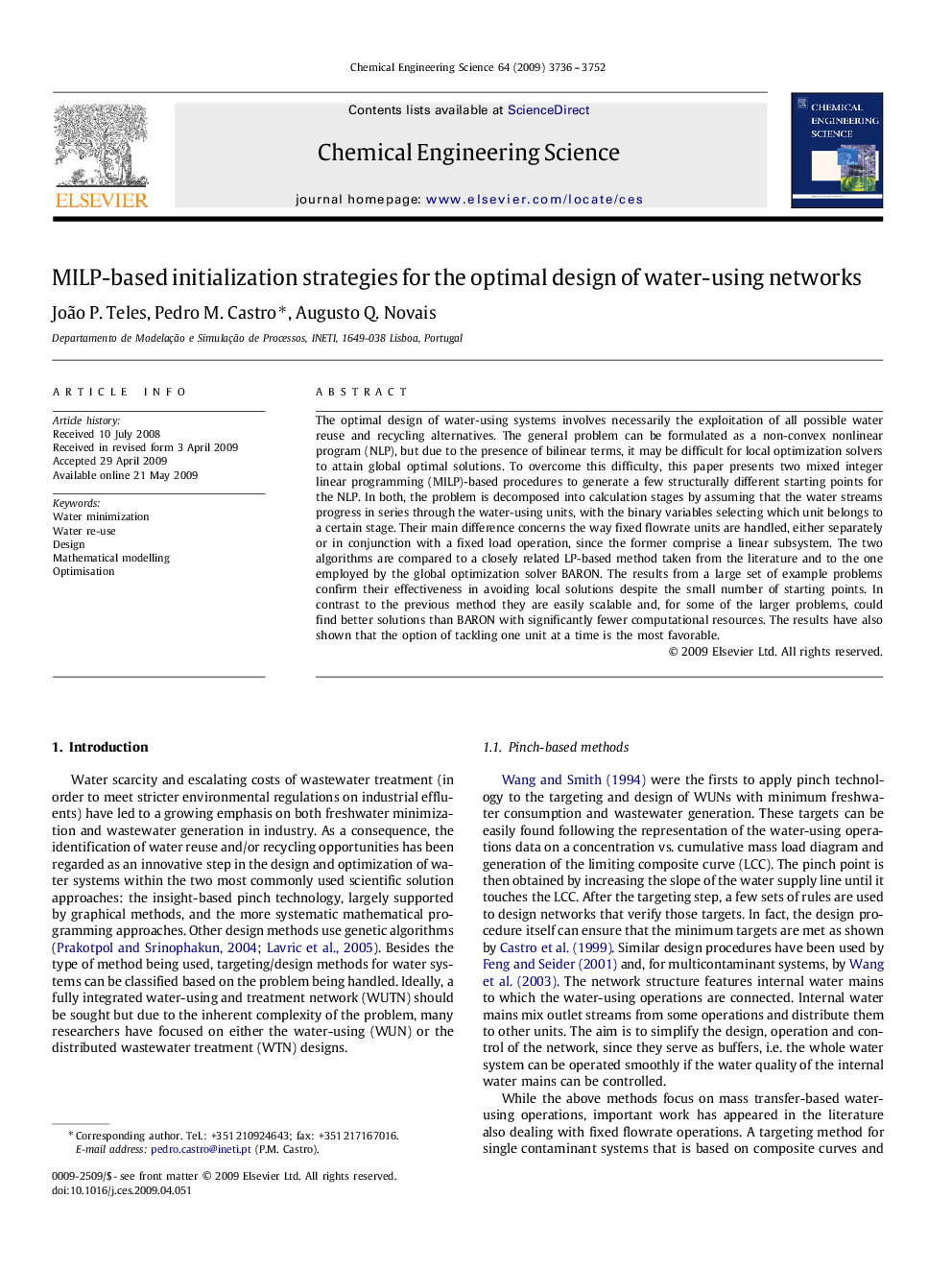| Article ID | Journal | Published Year | Pages | File Type |
|---|---|---|---|---|
| 157904 | Chemical Engineering Science | 2009 | 17 Pages |
The optimal design of water-using systems involves necessarily the exploitation of all possible water reuse and recycling alternatives. The general problem can be formulated as a non-convex nonlinear program (NLP), but due to the presence of bilinear terms, it may be difficult for local optimization solvers to attain global optimal solutions. To overcome this difficulty, this paper presents two mixed integer linear programming (MILP)-based procedures to generate a few structurally different starting points for the NLP. In both, the problem is decomposed into calculation stages by assuming that the water streams progress in series through the water-using units, with the binary variables selecting which unit belongs to a certain stage. Their main difference concerns the way fixed flowrate units are handled, either separately or in conjunction with a fixed load operation, since the former comprise a linear subsystem. The two algorithms are compared to a closely related LP-based method taken from the literature and to the one employed by the global optimization solver BARON. The results from a large set of example problems confirm their effectiveness in avoiding local solutions despite the small number of starting points. In contrast to the previous method they are easily scalable and, for some of the larger problems, could find better solutions than BARON with significantly fewer computational resources. The results have also shown that the option of tackling one unit at a time is the most favorable.
